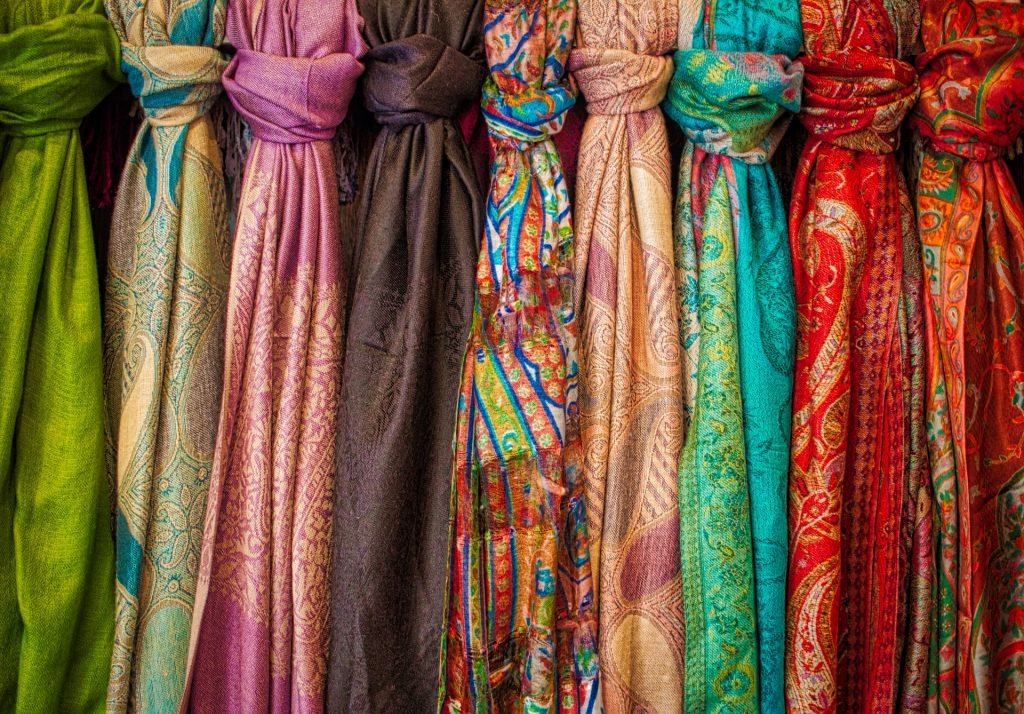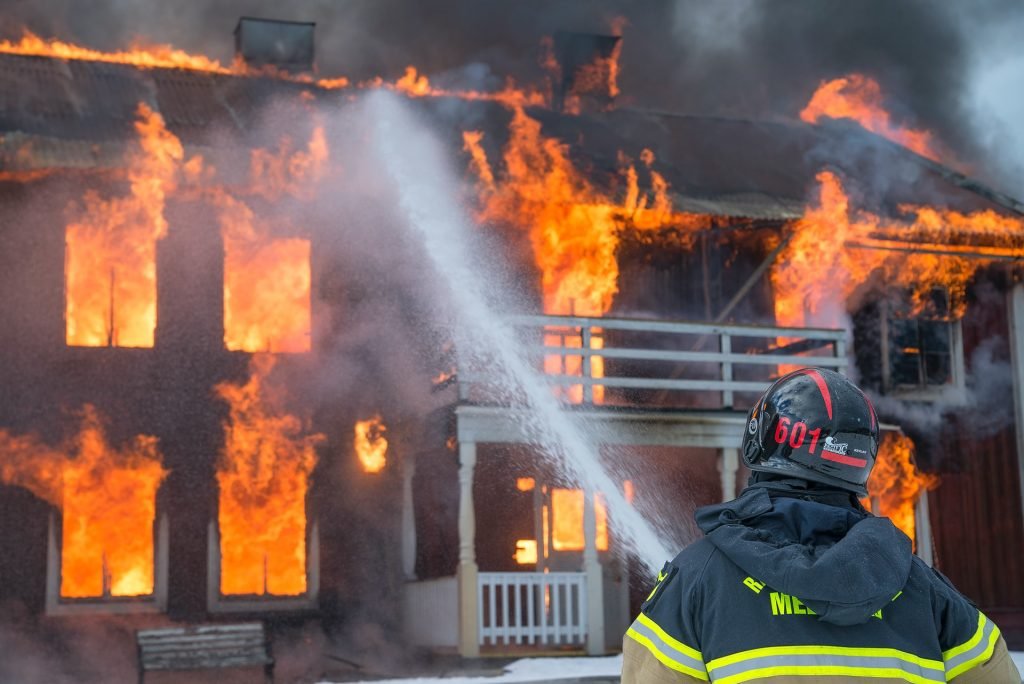Fire retardant fabrics have a lot of uses. They have been used for upholstery, curtains, clothing, furnishings, uniforms, etc. If you are searching for information regarding fire retardant fabrics, you are in the right place. In this article by LCR Services, we will be taking a look at fire retardant fabrics. We will be sharing an article about everything you need to know about fire retardant fabrics to better understand their uses and why you should consider these. Make sure to keep reading below to find out more information.
What Is A Fire Retardant Fabric?
A fabric is considered fire retardant if it does not easily catch fire and takes a long time to burn. Not all fabrics of this nature are the same. Some are more flammable than others. A fire retardant fabric is slow to burn and needs to reach a certain temperature to do so. Since there are plenty of options in this category of fabrics, they are assessed based on different criteria to determine their different fire-retardant properties.
What Is The Difference Between Fire Retardant Fabrics And Flame-Resistant Fabrics?
- Fire retardant fabrics are also called chemically flame retardant fabrics. These are fabrics that have undergone treatment with flame-retardant chemicals to make them fire retardant. They can still catch fire but at a slower rate. Fire retardancy is classified into three main groups: durably flame retardant, flame retardant, and inherently flame retardant.
- Flame-resistant fabrics are fabrics manufactured using synthetic fibers with properties that resist ignition when exposed to flame or heat. They are also known as inherently flame retardant fabrics. They do not burn, but they will eventually melt at a certain point when exposed to flames. The degree of flame resistance of a certain fabric will vary depending on the fibers used during the manufacturing process of the fabric.

Fabric is either inherently or chemically flame retardant, so you need to think carefully about what you will be using the fabric for and how long you want it to last. The chemicals can wash out over time, but if you give the proper care to the fabric, it can last for a long time. You must remember that some fabrics are more resistant to flame. For example, wool will take a longer time to burn compared to cotton or linen.
Fire retardant fabrics have different uses, as they can be used in homes, churches, in schools for curtains, drapes, tents, and uniforms (military, firefighter), race car drivers, etc.
What Is A Chemically Treated Fire Retardant Fabric?
It is a type of fabric treated with fire-resistant chemicals. This is classified into different types: brominated, chlorinated, inorganic flame retardants, nitrogen-containing, and phosphorus-containing. Chemically treated fire retardant fabrics tend to wear out faster as their chemicals will wear off as you wash them frequently.
What Are The Different Ways To Make Fabric Fire Retardant?
Coating: This technique is done by applying a layer of coating on the fabric. This will allow the fabric to stiffen, which makes it an excellent choice for upholstery. It is not commonly used in fabrics used for curtains because the material appears less natural than those used with other fabric treatments.
Dipping: This technique is also called chemical dipping. It is commonly used for fabrics with natural fibers. The technique is done by dipping the fabric into a chemical solution, which will then be absorbed into the fabric’s fibers. The chemicals will act as a barrier that will protect the fabric from the flame. If the fabric is exposed to fire, the chemicals applied during the treatment will then be activated by the heat, which will then lead to a chemical reaction that will put out the fire.
The flammability of fabric can be decreased by using fire retardants. Fabrics with natural fibers like cotton can undergo a chemical treatment that will reduce their flammability so that they can become almost non-combustible. The chemicals used for the treatment will react with the gases and convert them to carbon char, which will then slow down its burning rate.

Most polyester fabrics are permanently flame retardant. These types of fabrics are created with their fibers inlaid with flame retardant properties. The properties are incorporated directly into the structure of the fabric’s fibers. Synthetic fabrics can be classified as durably fire retardant, fire retardant, or non-fire retardant. A fabric is durably fire retardant when polyesters are treated using chemicals during its manufacturing process. It uses chemicals that are not water-soluble.
In other cases, synthetic fabrics can be chemically treated after their manufacturing process so they will be fire retardant. This can be done for natural fibers like cotton. If a fabric is untreated or untreatable, it is classified as a non-fire retardant. Samples of synthetic fabrics that are fire retardant include nylon, acrylic, polyester, glass fibers, and modacrylic.
When a fabric is called inherently flame retardant, it means the flame retardancy of the fabric will last a very long time. It can be washed or dry cleaned depending on the recommendation of the manufacturer. If the fabric is called flame retardant, it means that it has been chemically treated so that the flame retardancy of the fabric is temporary and may lessen over time, especially with constant cleaning and washing. This type of fabric must be dry cleaned with a non-liquid cleaning solution.
The flame retardancy of fabric is usually certified for one year, but the actual time will depend on how many times the fabric has been dry cleaned, as well as the conditions where the fabric is used. It must be retreated and re-tested on an annual basis by a professional to make sure it still works.
What Are The Different Fire Retardant Fabrics?
Indura – Indura cotton is one of the most popular flame-resistant fabrics on the market. It is pure cotton treated with flame-resistant polymers that work to provide heat and fire protection for professionals such as welders, electricians, car drivers, and pilots. It is washable and can be a great option for professionals who need fire-resistant clothing for their jobs.

Kevlar: One of the most common fire-resistant fabrics, Kevlar is lighter and thinner than Nomex fabrics. It is commonly used for heat protection. Popularly used for bulletproof vests, it is utilized for its ability to retain its tensile strength and is also used for extreme cold and hot environments. It is a suitable fabric for those who want to freely move without worrying about excess weight and padding.
Nomex: This is a fire-resistant fabric that has been used since the 1960s. It is like a fabric akin to nylon, is breathable, comfortable, and durable. Nomex is commonly used by race car drivers as well as firefighters as a part of their gear; it makes up a part of their hood. It helps protect the areas of the head, face, and neck from extreme heat and flames when they are fighting fires.
Nomex Flight Suits: It is made of 90% Nomex fabric. It is a US military-grade suit used by astronauts and military pilots. This material is lightweight and durable and is quite useful in protecting against fires while allowing them a freer range of movement.
PBI: An organic fiber with fire resistance properties. It contains moisture that helps firefighters while they are on the job, especially if there is direct exposure to the fire and flames. It is lightweight and durable but you must keep in mind that it can be priced higher than the other products in the market.
Applications
Fire retardant fabrics have a lot of uses. It plays a big role in different applications. Fire retardant fabrics are used in different industries as it is one of the requirements in their safety standards. Here are some of the common applications for fire retardant fabrics.

- Automotive, aeronautical, and marine applications – Fire retardant fabrics are used for car seats, cargo nets, and interior aspects of the car. It is also a part of the professional motor racing gear to keep them protected from fires when accidents happen.
- Hospital – Fire retardant fabrics are commonly used as drapes, mattress covers, and sheets.
- Firefighters – Fire retardant fabrics are used to protect firefighters from fires and flames during their active duty.
- Military – Fire retardant fabrics are used by pilots and military personnel and it is a part of their protective military clothing. It is also used in parachutes and tents.
- Occupational safety – Industrial workers use PPE with fire retardant fabrics to keep them safe while they are working.
- Hotels, restaurants, schools, theaters – Fire retardant fabrics are used as drapes, curtains, and other interior materials.
If you are planning to order fire retardant fabrics, you must only choose a trustworthy company like LCR Services. We offer high-volume cut and sew products and we can customize your orders. You can check this link if you want to know more about our services. You can visit our shop to check out our products and if you want more information please do not hesitate to contact us.
If you are looking for a cut and sew manufacturing company, check out LCR Services. We are located in Phoenix, Arizona. Our company is minority-owned and we manufacture high-volume cut and sew products using fire retardant fabrics and materials.
If you are interested in our company or if you have questions about our services, do not hesitate to reach out to us. You can contact us by calling 602-200-4277 or sending an email at sennsour@lcrsvcs.com. Please let us know if you prefer customized products, we will manufacture them according to your specifications. What are you waiting for? Call us today!
